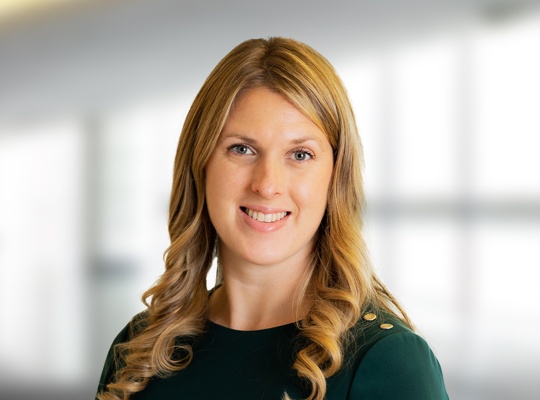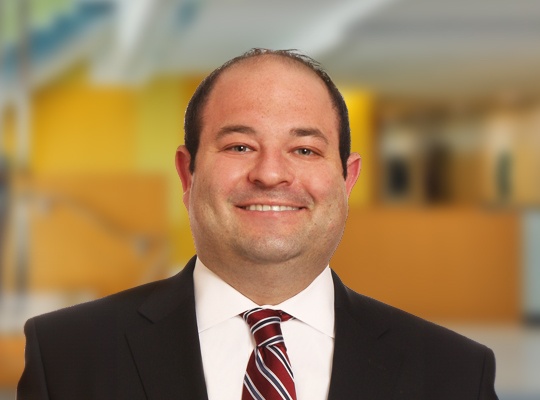Federal Reserve Releases Updated Term Sheet on the Term Asset-Backed Securities Loan Facility (TALF)
Introduction
On April 9, 2020, the Federal Reserve Board of Governors (the “Fed”) released an updated term sheet (the “Updated Term Sheet”) for the Term Asset-Backed Securities Loan Facility (“TALF”) program. While the Updated Term Sheet provided additional details and further clarifications to the Fed’s March 23, 2020 announcement reestablishing the TALF program (see full description of the Fed’s announcement of the TALF Program, in the March 2020 Dechert OnPoint - Federal Reserve Establishes Term Asset-Backed Securities Loan Facility (TALF)), it also created ambiguities that, until corrected, make it unlikely that the TALF program will fulfill its intended purpose.
The Updated Term Sheet both expanded and narrowed the TALF program by increasing the range of ABS that may be financed by the program (“Eligible Collateral”) to include certain legacy CMBS and newly issued static pool CLOs (each as defined below), while limiting the type of U.S. companies eligible to borrow under the program (“Eligible Borrowers”) and requiring that the issuers of asset-backed securities (“ABS”) to be financed as Eligible Collateral under TALF be U.S. companies. U.S. companies are now defined as businesses that are created or organized in the United States or under the laws of the United States and that have significant operations in and a majority of their employees based in the United States. The restriction of both Eligible Borrowers and eligible ABS issuers to U.S. companies with significant operations in and a majority of their employees in the United States effectively excludes most investment funds from becoming Eligible Borrowers, and more seriously excludes ABS that must be issued by a bankruptcy remote special purpose vehicle from becoming Eligible Collateral. Neither such problem existed in the March 23, 2020 Term Sheet1 nor in the predecessor TALF.2
While the expansion of the types of ABS that constitute Eligible Collateral should assist bank and non-bank lenders that rely on these CMBS and CLO markets to free up a portion of their balance sheets to provide additional credit and liquidity to businesses, the change to the definition of U.S. company will need to be addressed in order for the new TALF program to function as intended.
What’s New?
Eligible Collateral
The Fed expanded the Eligible Collateral to include AAA-rated tranches of both (i) commercial mortgage-backed securities (“CMBS”) issued prior to March 23, 2020 and (ii) static pool collateralized loan obligations (“CLO”) issued on or after March 23, 2020. However, the Fed excluded from Eligible Collateral all commercial real estate CLOs and single-asset single-borrower CMBS. The Fed also did not clarify whether mortgage-backed securities backed by pools of single-family rental mortgage loans will qualify as CMBS for purposes of TALF.
The Fed also expanded the list of underlying credit exposures supporting the ABS that constitutes Eligible Collateral to include equipment leases, leveraged loans, and commercial mortgages on real property located in the United States or one of its territories, while removing eligible servicing advance receivables as a credit exposure that can back Eligible Collateral.
Eligible Borrowers and Issuers of ABS
Both Eligible Borrowers and issuers of ABS that constitutes Eligible Collateral must be U.S. companies. The Fed changed its definition of U.S. companies to require that any such company not only be created or organized in or under the laws of the United States but also have significant operations in, and a majority of its employees based in, the United States. As noted in the introductory paragraph, this creates significant impediments for the ABS market and its investors to be able to effectively use the TALF program to free up credit and liquidity for consumers and businesses. It’s unclear whether this change was an intentional restriction on the program or not, and we will look to subsequent releases for further clarity on this point.
Pricing
The Fed’s announcement also created new pricing metrics for the loans backed by Eligible Collateral, including varying rates for ABS with Small Business Administration (“SBA”) guarantees. Pricing for CLOs will be based upon the 30-day average secured overnight financing rate (“SOFR”) and pricing for non-CLOs will be based on a 2- or 3-year federal funds overnight index swap rate (“OIS”), as applicable.
- CLO interest rate: SOFR + 150 basis points.
- SBA-backed ABS:
- SBA Pool Certificates (7(a) loans) – top of the federal funds target range + 75 basis points, or
- SBA Development Company Participation Certificates (504 loans) – 3-year OIS rate + 75 basis points.
- Non-SBA-backed ABS:
- securities with a weighted average life of less than two years, the 2-year OIS rate + 125 basis points, or
- securities with a weighted average life of two years or greater, the 3-year OIS rate + 125 basis points.
The Fed’s decision to use SOFR and OIS, respectively, as the reference rates for the new pricing metrics will likely create a basis mismatch with the related Eligible Collateral, given that floating-rate debt liabilities in the securitization markets (and the underlying assets backing them) largely continue to use LIBOR as the applicable reference rate. Currently, it is not clear how any such basis mismatch will be accounted for once the TALF program begins.
Haircut
The Updated Term Sheet includes the Eligible Collateral haircut schedule that the Eligible Borrower will be required to fund. The Schedule is substantially consistent with the haircut schedule from the predecessor TALF program established during the 2008 financial crisis.
The haircuts are determined by asset class and the weighted average life of the asset. All asset classes must have a weighted average life of five years or less, other than CMBS, static CLOs, student loans and SBA loans. These four asset classes may have a weighted average life over five years but not more than ten years, with the caveat that the haircuts will increase by a percentage point for each additional year greater than a five-year weighted average life.3
The schedule of haircuts is set forth below:
Haircut Schedule4
ABS Average Life (years)*
| ||||||||
Sector | Subsector | 0-<1 | 1-<2 | 2-<3 | 3-<4 | 4-<5 | 5-<6 | 6-<7 |
| Auto | Prime retail lease | 10% | 11% | 12% | 13% | 14% | ||
| Auto | Prime retail loan | 6% | 7% | 8% | 9% | 10% | ||
| Auto | Subprime retail loan | 9% | 10% | 11% | 12% | 13% | ||
| Auto | Motorcycle / other recreational vehicles | 7% | 8% | 9% | 10% | 11% | ||
| Auto | Commercial and government fleets | 9% | 10% | 11% | 12% | 13% | ||
| Auto | Rental fleets | 12% | 13% | 14% | 15% | 16% | ||
| Credit Card | Prime | 5% | 5% | 6% | 7% | 8% | ||
| Credit Card | Subprime | 6% | 7% | 8% | 9% | 10% | ||
| Equipment | Loans and Leases | 5% | 6% | 7% | 8% | 9% | ||
| Floorplan | Auto | 12% | 13% | 14% | 15% | 16% | ||
| Floorplan | Non-Auto | 11% | 12% | 13% | 14% | 15% | ||
| Premium Finance | Property and casaulty | 5% | 6% | 7% | 8% | 9% | ||
| Small Business | SBA Loans | 5% | 5% | 5% | 5% | 5% | 6% | 6% |
| Student Loan | Private | 8% | 9% | 10% | 11% | 12% | 13% | 14% |
| Leveraged Loans | Static | 20% | 20% | 20% | 20% | 20% | 21% | 22% |
| Commercial Mortgages | Legacy, Conduit | 15% | 15% | 15% | 15% | 15% | 16% | 17% |
| * For auto, credit card, equipment, floorplan, and premium finance ABS, the weighted average life must be five years or less. For other new-issue eligible collateral, haircuts will increase by one percentage point for each additional year (or portion thereof) of average life beyond five years. For legacy CMBS with average lives beyond five years, base dollar haircuts will increase by one percentage point of par for each additional year (or portion thereof) of average life beyond five years. No securitization may have an average life beyond ten years. | ||||||||
What’s the Same?
The Fed has maintained the size of the TALF program at US$100 billion. The Eligible Collateral, with the exception of legacy CMBS, remains ABS issued on or after March 23, 2020. In addition, to be Eligible Collateral, all or substantially all of the underlying credit exposures must be newly issued, other than for legacy CMBS. And as before, the Department of Treasury (the “Treasury”), using the Exchange Stabilization Fund, will invest US$10 billion into the special purpose vehicle (“SPV”).5
Special Considerations for CLOs
The inclusion of CLO securities as Eligible Collateral for the TALF program is a welcome addition, both for lenders and owners of leveraged loans that look to CLO issuers to acquire leveraged loans from them in order to free up capital so that they can continue to lend, and also for banks to be able to provide additional warehouse lending to prospective CLO issuers and other owners of leveraged loans. However, other limitations in the Updated Term Sheet (beyond the requirements that Eligible Borrowers and issuers of ABS be U.S. companies as described above, which present issues for multiple classes of ABS) make it difficult for us to see how the TALF program would effectively promote this goal.
In particular, the combination of the requirement that the leveraged loans constituting the underlying credit exposures in the CLO must be newly issued, and the requirement that the CLO be a fully ramped static pool issued on or before September 30, 2020, will make it difficult for Eligible Borrowers using CLO securities as Eligible Collateral to access the TALF program. First, the requirement that all credit exposures be newly issued means that loans that have been accumulating in warehouses or on balance sheets since before the recent downturn cannot be included in TALF-eligible CLOs. This removes the ability of large commercial banks that currently hold or provide warehouse financing for pre-existing leveraged loans, and of non-bank lenders, financial institutions and funds that currently own such leveraged loans, to transfer these loans into new TALF-eligible CLOs in order to free up capital for additional lending or investment in new loans. Second, it will be difficult for investment managers of entities that plan to issue new CLOs to find a warehouse and create a sufficiently diversified pool of newly-issued loans to ramp an entire static pool loan portfolio, and close the CLO issuance prior to the September 30, 2020 deadline for new loan extensions under the TALF program (unless that deadline is extended).
While future changes to the TALF program are impossible to predict, for the program to be meaningful to the CLO market – and for CLO market participants to be able to meaningfully free up capital for additional lending to U.S. businesses – we would look for (i) the prohibition on pre-existing loans to be eased and for TALF-eligible CLOs to be allowed to hold pre-existing loans from a lookback period (as was permitted for eligible ABS in the original TALF) as well as newly-issued loans, (ii) an extension of the September 30, 2020 deadline for static pool CLOs and (iii) clarification, at a minimum, that the concept of a static pool CLO permits the sale of defaulted loans and credit risk loans and the reinvestment of proceeds received therefrom. We would also look for, and expect, a further clarifying release from the Fed that (x) removes the requirement that the CLO issuer be a U.S. company with substantial operations and employees, and simply requires that it be a company organized in the United States or any state thereof, and (y) changes the definition of U.S. company, for purposes of the Eligible Borrower definition, to either what was included in the March 23 term sheet or the definition used in the predecessor TALF program.
TALF Funds
As described above, the April 9 term sheet does not permit U.S. investment funds that do not have “significant operations and a majority of their employees in the U.S.” to be Eligible Borrowers under the TALF program. We would look for the definition of Eligible Borrower to be modified to either the definition used in the March 23 term sheet or that used in the predecessor TALF program. Assuming such a change is made, as noted in our previous OnPoint, many investment management firms are currently pursuing fund formation and investment strategies to take advantage of the TALF program in order to invest in Eligible Collateral. Such funds will need to be customized to take advantage of the unique market opportunities that TALF and current financial uncertainties present. Those uncertainties will present special challenges for both sponsors and investors.
Moving Forward
The Fed’s new term sheet provides further clarity on some of the details of the TALF program as noted above but continues to create ambiguities that may make it challenging for market participants to fully utilize the program. Though the additional terms and conditions that are still yet to come, we are hopeful that the program will realize its intended benefits. Both the Fed and the Treasury may make further adjustments throughout the course of the TALF program and may make changes at any time. Dechert will continue to monitor all developments relating to the Fed’s announcements closely, and we encourage our readers to follow our regular updates on our COVID-19 Coronavirus Business Impact website.
Footnotes
1. The March 23 Term Sheet stated: “A U.S. company would be defined as a U.S. business entity organized under the laws of the United States or a political subdivision or territory thereof (including such an entity that has a non-U.S. parent company), or a U.S. branch or agency of a foreign bank.” See Federal Reserve Press Release - March 23, 2020 and Federal Reserve TALF Term Sheet - March 23, 2020.
2. See Federal Reserve Bank of New York, Term Asset-Backed Securities Loan Facility: Frequently Asked Questions which included in the question relating to who is an eligible borrower “(4) an investment fund that is U.S. organized and managed by an investment manager that has its principal place of business in the United States.”
3. However, we note that the chart below shows that the haircut for SBA loans does not increase beyond 6% for a pool of SBA loans with a weighted average life greater than 6 years.
4. Source: Federal Reserve TALF Term Sheet – April 9, 2020.
5. We note that the Fed’s decision to remove “initial” in the April 9 term sheet from the reference to the US$10 billion investment suggests that US$10 billion may be the maximum investment by the Treasury into the SPV.







